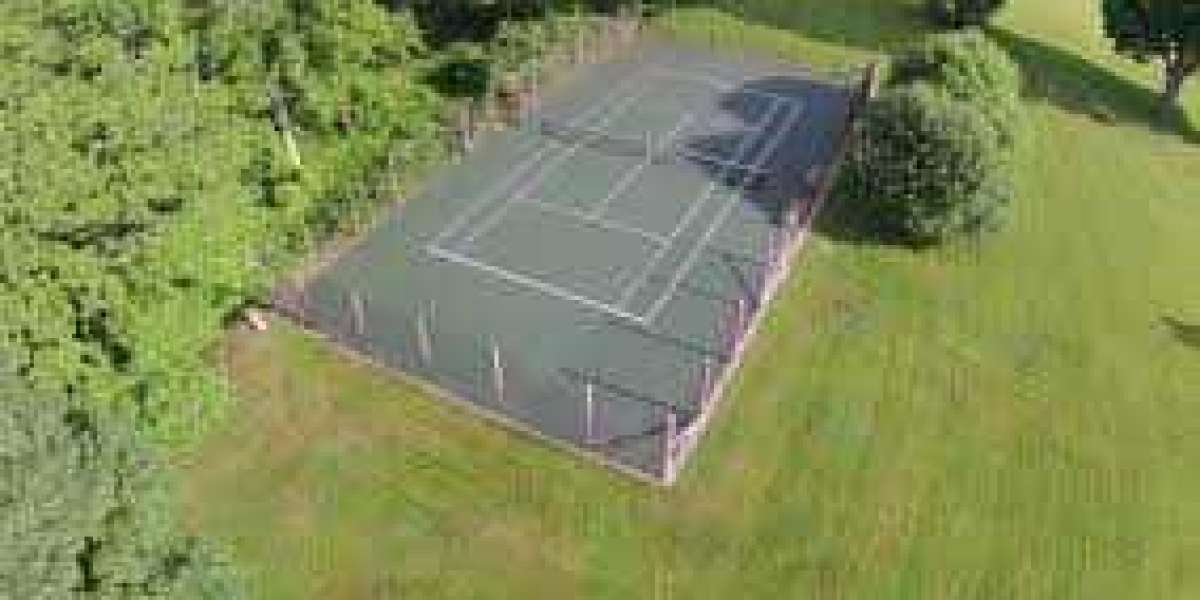Installing a tennis court is a significant investment that can provide countless hours of enjoyment and enhance the value of your property. This comprehensive guide will walk you through the entire process of tennis court installation, from planning and design to construction and maintenance. Whether you are a homeowner looking to build a personal court or a facility manager aiming to upgrade your amenities, our detailed insights will help you achieve a flawless tennis court.
Planning Your Tennis Court Installation
Assessing Your Space and Location
The first step in tennis court installation is to assess the available space and choose the optimal location. The ideal site should be flat, with good drainage and access to sunlight throughout the day. Consider the following factors:
- Orientation: The court should ideally be oriented north-south to minimize the impact of the sun on players.
- Space Requirements: A standard tennis court measures 78 feet by 36 feet, with additional space needed for run-off areas and fencing.
- Accessibility: Ensure the location is accessible for construction equipment and future maintenance.
Selecting the Court Surface
Choosing the right court surface is crucial for both playability and maintenance. The main types of surfaces are:
- Hard Courts: Made of asphalt or concrete, these are durable and provide a consistent bounce. They require minimal maintenance but can be hard on players' joints.
- Clay Courts: Offer a slower game with higher bounce. They require regular maintenance to keep the surface in good condition.
- Grass Courts: Provide a fast game with a low bounce. They require the most maintenance, including regular mowing and watering.
- Synthetic Courts: These include options like artificial turf and acrylic surfaces, which offer a balance of durability and playability.
Designing Your Tennis Court
Dimensions and Layout
A well-designed tennis court meets the standard dimensions and includes necessary features for an optimal playing experience:
- Singles Court: 78 feet by 27 feet.
- Doubles Court: 78 feet by 36 feet.
- Run-Off Areas: At least 12 feet behind the baselines and 6 feet on the sides.
- Fencing: Typically 10-12 feet high, surrounding the court to keep balls in play.
Additional Features
Consider incorporating additional features to enhance the functionality and comfort of your tennis court:
- Lighting: For evening play, install LED lights that provide even illumination without glare.
- Seating and Shade: Include benches and shaded areas for players and spectators.
- Water Drainage: Proper drainage systems prevent water accumulation and prolong the court's lifespan.
Construction Process
Site Preparation
Proper site preparation is essential for a successful tennis court installation:
- Clearing and Grading: Remove vegetation, debris, and rocks. Grade the site to ensure a level base.
- Sub-Base Construction: Lay a stable sub-base, typically made of crushed stone, to provide a solid foundation.
Base and Surface Installation
The base and surface layers are critical to the court's performance and durability:
- Base Layer: Constructed of asphalt or concrete, this layer provides a stable and level surface.
- Surface Layer: Depending on the chosen surface, apply materials like clay, synthetic turf, or acrylic coatings.
Fencing and Accessories
Installing fencing and other accessories completes the court setup:
- Fencing: Erect sturdy fencing around the court perimeter.
- Net Posts and Nets: Install high-quality net posts and nets that withstand regular use.
Maintenance and Upkeep
Regular Maintenance
Regular maintenance ensures your tennis court remains in top condition:
- Cleaning: Sweep the surface regularly to remove debris.
- Resurfacing: Hard courts may need resurfacing every 4-8 years, while clay courts require more frequent topdressing.
- Line Painting: Repaint lines as needed to maintain visibility and accuracy.
Seasonal Care
Seasonal care helps protect your court from weather-related damage:
- Winterizing: For courts in colder climates, winterize by covering the surface and removing nets.
- Summer Care: During hot weather, water clay courts regularly and ensure hard courts are free of cracks.
Costs and Budgeting
Initial Investment
The initial investment for tennis court installation varies based on several factors:
- Surface Type: Hard courts are typically less expensive than clay or grass courts.
- Site Preparation: Costs for site preparation depend on the terrain and required grading.
- Additional Features: Extras like lighting and seating add to the overall cost.
Long-Term Costs
Consider long-term costs for maintenance and repairs:
- Maintenance: Budget for regular maintenance activities like cleaning, resurfacing, and line painting.
- Repairs: Plan for occasional repairs to the surface, fencing, and accessories.
Conclusion
Installing a tennis court is a rewarding project that offers many benefits. By carefully planning and executing each step, from site selection to maintenance, you can ensure a high-quality court that provides years of enjoyment. Follow our comprehensive guide to achieve a flawless installation and elevate your property with a professional-grade tennis court.








